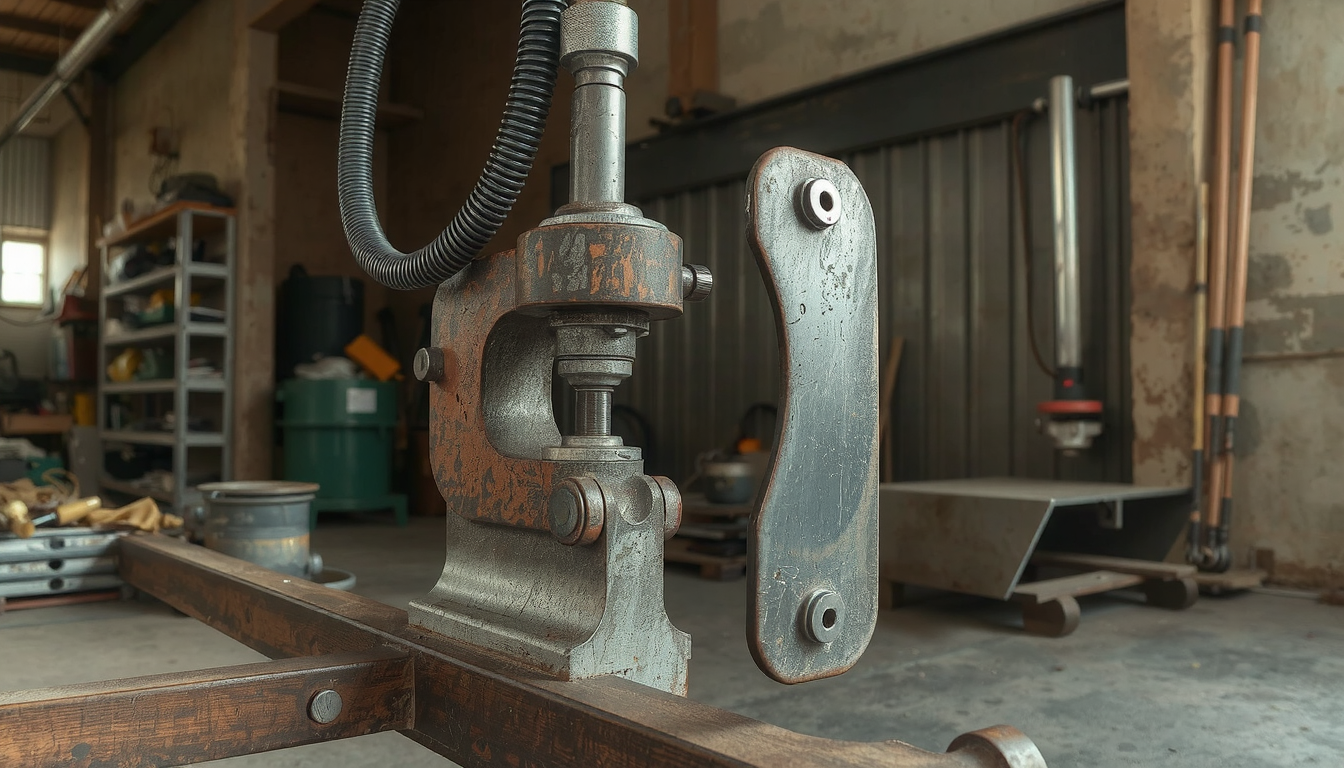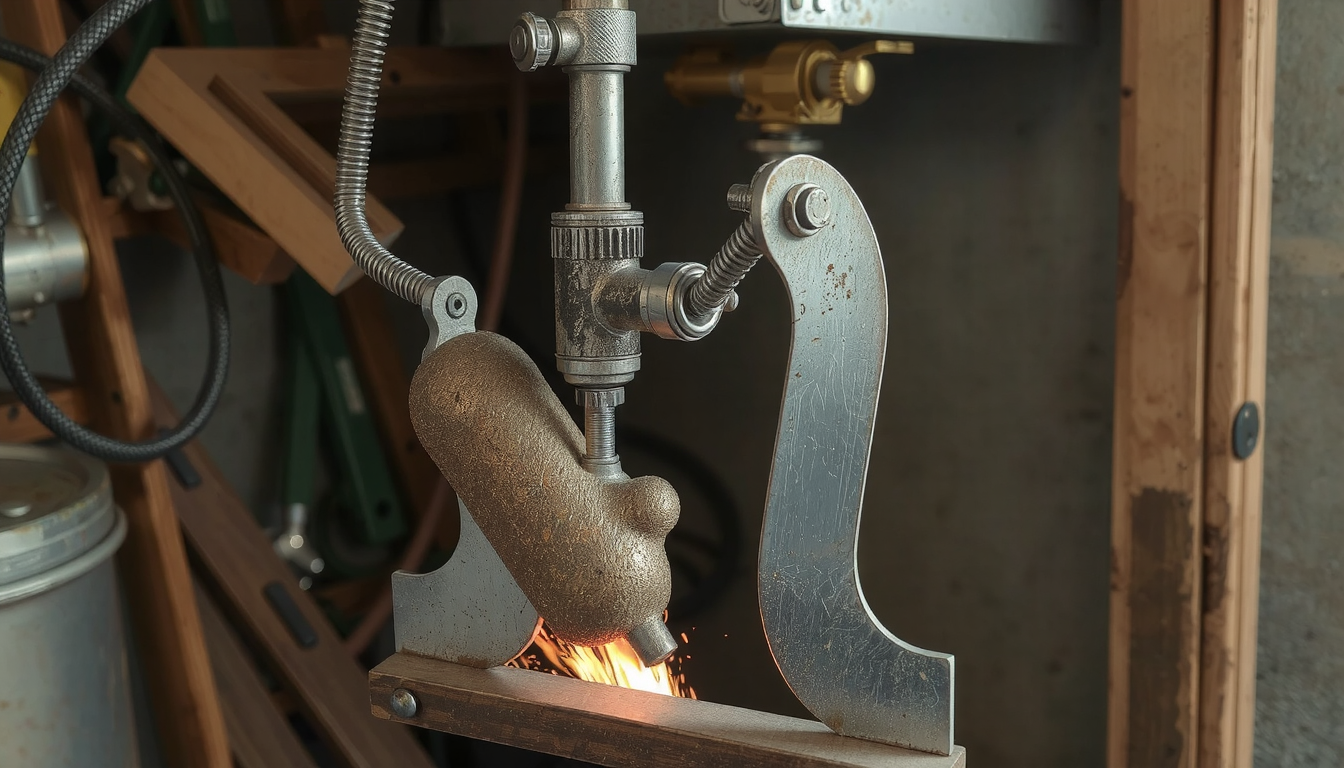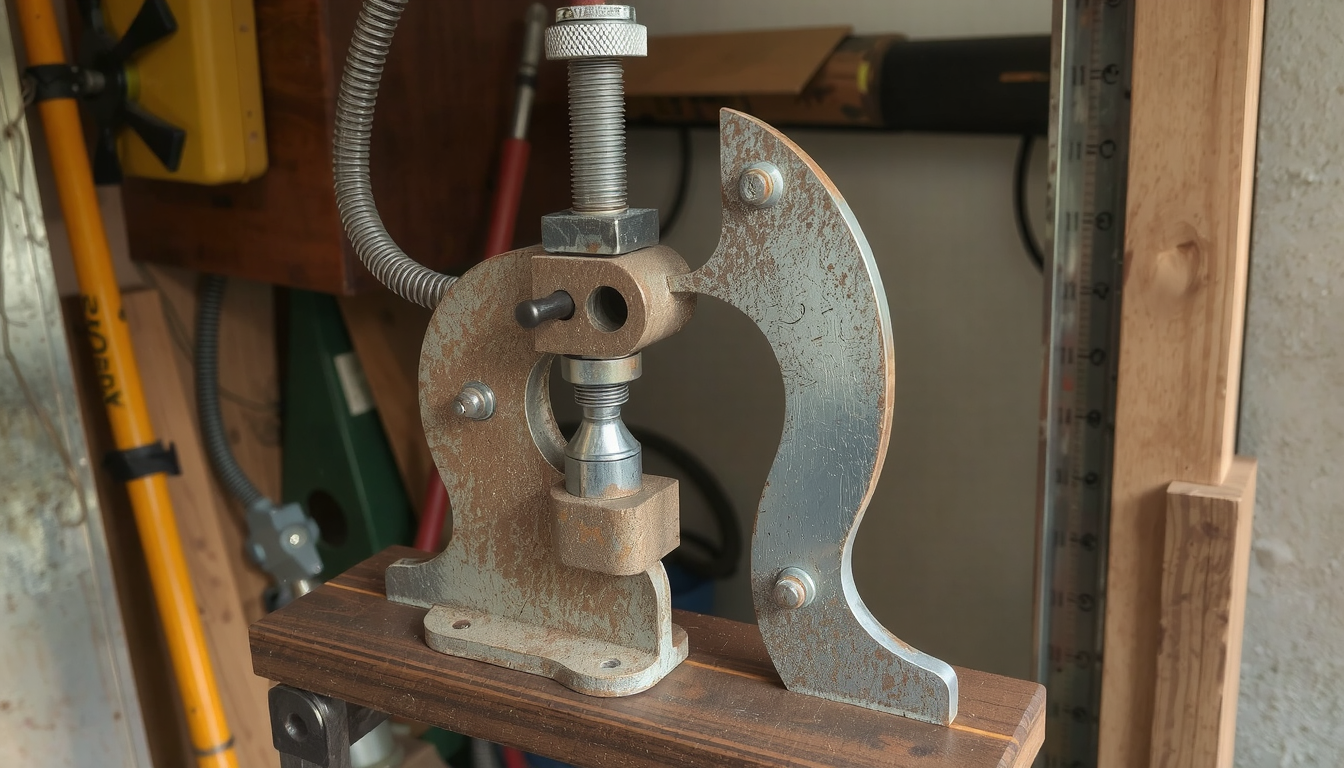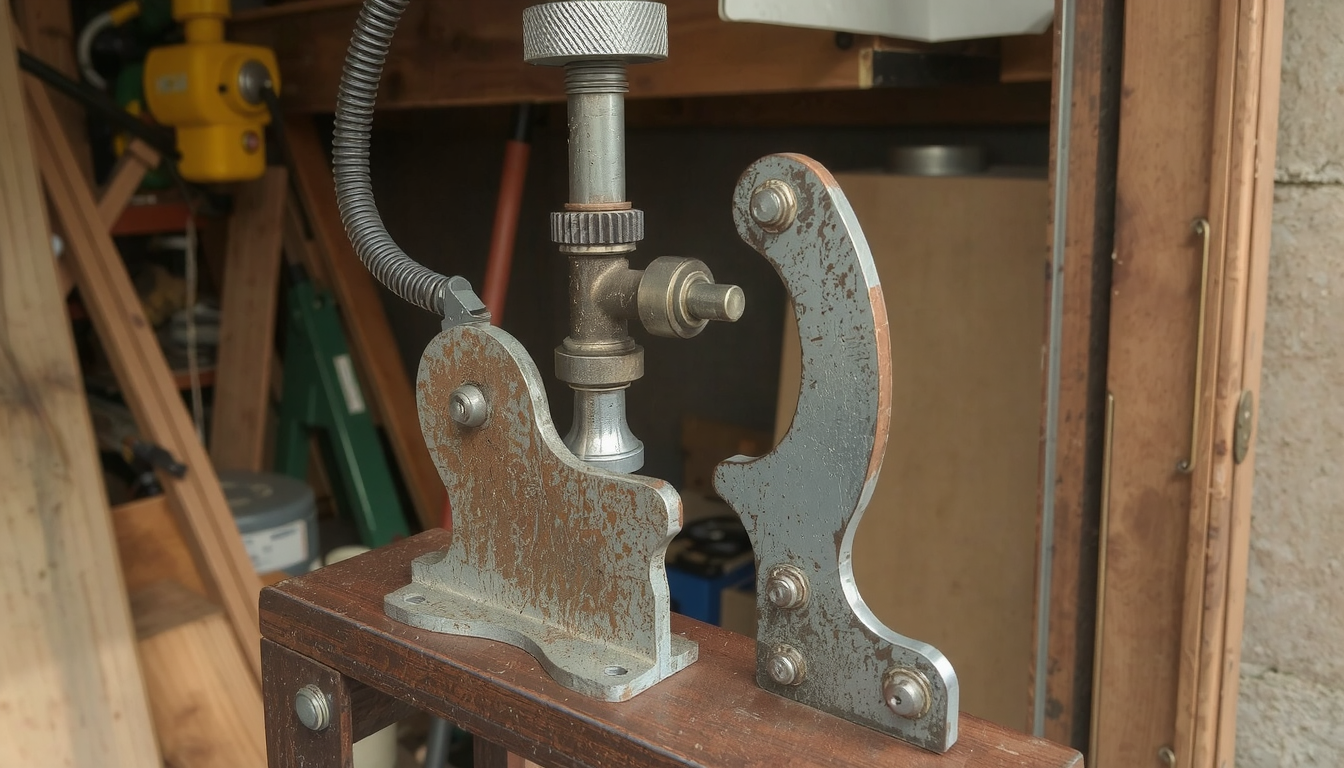Introduction: Build Your Own Bender

Yes. You can build your own sheet metal bender with the right plans and materials. This project of doing it yourself is rewarding and quite easy to do. It is a good way to improve your workshop and expand its capability. You will also learn how to make your own free-forming tool that can save you money on other expensive tools.
The benefits are clear. You get a custom tool built for your needs. You also get the deep satisfaction of using a machine you made with your own hands. This guide will walk you through everything, from planning and design to gathering tools and step-by-step instructions.
Before You Begin: Setting Up Your DIY Sheet Metal Bender Project
Planning is important for the success of your project. Before proceeding, you should look at the basic principles of operation. That will allow you to choose the right project considering your skills, budget, and workshop space. A small initial thought can save you lots of time and money later.
A Bender’s Core Principles
A sheet metal bender works by using clamping force to hold a metal sheet. When you bend a piece of metal, the outer side is put under tension and elongates, while the inner side is compressed. At a high enough intensity, these forces yield the material, creating a permanent bend. You can think of sheet metal bending as a function of these forces acting on the material.
This method ensures a clean, crisp fold along a straight line. The basic development of sheet metal bending machine principles show that you can use the force applied in the right places to create a precise bend. Your DIY bender will work in the same way, with the same principles, and shape metal.
Smart Design Choice
There really is not only one option for DIY benders, and your decision is contingent on what you will be doing. Consider what you already have in your workshop and the space you can allocate. Not least, ensure you check if you have a welder available. The projects you plan to do will be helpful for the decision to be made.
This table compares three common DIY designs. It will help you decide which path to take for learning how to make a sheet metal bender.
| Характеристика | Vise-Mounted Brake | No-Weld Benchtop Brake | Welded Heavy-Duty Brake |
|---|---|---|---|
| Сложность | Низкий | Средний | Высокий |
| Стоимость | $ | $$ | $$$ |
| Skills Needed | Basic hand tools | Drilling, cutting, precise assembly | All of the above + Welding |
| Лучшее для | Small brackets, thin gauge aluminum | General hobbyist use, up to 18-gauge steel | Larger projects, thicker materials, shop use |
| Плюсы | Simple, cheap, small footprint | Accessible, no welding required, robust | Very strong, high capacity, durable |
| Cons | Limited capacity & width | Less robust than welded, alignment is critical | Requires welder, more expensive |
Fundamental Tools and Materials Required
This should be a rough guide for your project. You may need to obtain other parts besides the list provided according to your plan. Starting with a complete inventory makes the assembly process quick and easy.
Safety First: Your Equipment for Personal Protection (PPE)
Safety must be your top priority. Never handle metal without the proper protective gear.

- Safety glasses or face shields
- Heavy-duty work gloves
- Hearing protection (if using a grinder or cutter)
- Welding helmet and leathers (if configuration is required)
Basic Tools Regardless of the Design
These are the major tools and devices (manual and powered) you will need for either bender construction.
- Tape measure
- Metal scribe or permanent marker
- Engineer’s square
- Center punch
- Drill or drill press
- Set of metal drill bits
- Wrench and socket set
- C-clamps or locking pliers
Materials for Building a No-Weld Benchtop Bender
In the step-by-step guide, we are going to use a no-weld design. That is the best method for learning how to make a sheet metal bender.
- Angle iron (e.g., 1.5″ x 1.5″ x 1/8″ thick)
- Steel flat bar
- Heavy-duty door or gate hinges (2 or 3)
- Nuts, bolts, and washers
Additional Needs for a Welded Bender
If you choose a welded design for more strength, you will need these items.
- Welder (MIG, TIG, or Stick)
- Welding wire or rods
- Angle grinder with cutting and grinding discs
- Thicker steel stock (e.g., 1/4″ plate or 2″ angle iron)
- Steel tubing for handles
Your Own Sheet Metal Bender: Step-by-Step Instructions (No-Weld Design)
This set of guidelines will concentrate on the fabrication of a no-weld benchtop bender. This project is the most accessible for DIY enthusiasts. We will use sample dimensions for a 24-inch bender. You can change these to fit your needs.
Step 1: Cutting Your Materials to Length
Cutting the most significant materials is the first step. The bender structure comprises the three most essential components—the bed (base), the clamp, and the bending apron.
The first thing to do is to cut three pieces of angle iron of 24 inches in length for a 24-inch bender. One will be the bed, the second is going to be the clamp, and the third one is the apron that forms the bend. A clean, square cut is important for the tool to fit together well at the end.
Step 2: Creating the Bending Edge

For good bending, the clamp edge must be sharp and straight. This is one of the most important parts of building a sheet metal bender. If it is dull or rounded, the bend will not be very strong.
Take the angle iron piece you will use for the clamp. Use a file or an angle grinder with a flap disc to shape one of the corner edges. You want to create a sharp edge at about a 45-degree angle. A properly sharpened edge feels crisp to the touch, not rounded. It doesn’t need to be razor-sharp, but it must be straight and defined.
Step 3: Assembling the Hinges – The Critical Alignment
This is the most crucial step in the entire build. The pivot point of your hinges must line up perfectly with the sharp bending edge of the clamp. If they are not aligned, your bender will not work correctly.
To do this right, lay the bed piece of angle iron flat on your workbench. The apron piece goes next to it. Then place the clamp piece (with the sharpened edge) on the bed, using a thin piece of scrap metal between them to create the gap for your sheet metal.
Align the sharpened edge of the clamp with the bed’s edge. Now, position your hinges so that the hinge barrel center is right on that line. Neglecting to do this will make the apron “roll” the metal instead of creasing it. Remember to clamp everything firmly before marking any holes. For a better visual explanation, you may refer to this Simple Sheet Metal Brake: No Welding – Instructables project.
Step 4: Drilling and Bolting the Assembly
Once all components are secured in the right position, it’s drilling time. Firstly, use your center punch to indicate the hole locations on the hinges. Don’t forget to mark holes on both the bed and the apron.
Drill the holes. A good practice is to start with a smaller pilot hole. Then, finish up with the drill bit size that fits your bolts. This will result in a cleaner and more accurate hole. After drilling, you may proceed to bolt the hinges to the bed and the apron.
Step 5: Fabricating the Handles and Clamping Mechanism
In order to bend metal, you need leverage. You can attach handles to the bending apron by bolting or welding pieces of steel tubing to the apron. You can also use strong wooden dowels.
Now, you need a device that will hold the clamp tightly down. The most straightforward way is to drill holes through both the clamp and the bed. You can then use long bolts with wing nuts or handles to tighten the clamp onto your workpiece. This is an important element for how to make a sheet metal bender that gives strong results every time.
Calibration, Testing, and Troubleshooting Your New Bender
You have constructed your bender, but the job isn’t quite finished. Testing, adjustments, and learning how to operate the bender effectively are your last steps. This is the moment when you turn a mere assembly of parts into a precise machine.
Performing the First Test Bend

You should have some scrap material to test with first. A thin piece of aluminum or a piece of 22-gauge steel is a good starting point. Place it in the bender. Be sure to place your bend line parallel to the sharp edge of the clamp.
Secure your clamping bolts properly. Uneven pressure will cause an uneven bend. Once it is tight enough, pull up smoothly and evenly on the handles. Do not jerk them. A smooth, steady pull will give the best results. Watch as the metal folds neatly into position.
Spring-back: What You Should Know and How to Counteract It
When you bend metal, it has a tendency to return to its original shape. This phenomenon is known as the spring-back effect. That’s why you often have to over-bend the metal a little bit past your target angle.
To get a perfect 90-degree angle, you will probably need to bend the material to 92 or 93 degrees. The exact amount of over-bend needed will depend on the thickness and type of metal, as well as the sharpness of the bend. This is something you will learn the feel for by bending a few trial pieces.
Dealing with Common Issues
If the bending process is not perfect yet, do not worry. Here are some common bending problems and their solutions.
- Uneven Bends: This usually occurs because the clamping pressure is not even or because the bed of your bender is warped. Ensure your clamps are equally tight and the base is flat.
- Curved/Rolled Bends: This is the most frequent issue. It means that the hinge pivot has not been aligned with the bending edge. You will need to unbolt and re-adjust the hinge position to fix it.
- Material Cracking: If the metal cracks at the bend, your bend radius is too tight for the material. This is common with thicker or more brittle metals. You can fix this by slightly softening the sharp bending edge with a file.
DIY vs. Professional: When Should You Make and When Should You Buy
A DIY bender is a good thing for a hobbyist to possess. It is a great tool for making brackets, boxes, and any custom parts for your projects. The skillset you develop from learning how to make a sheet metal bender is priceless.
However, it is also crucial to know its limits. In precision projects that require intricate forms or materials that are very thick, the best option is a specialist job. Professional shops use computer-controlled machines that produce accurate parts every time. For demanding jobs, professional производство листового металла ensures your parts are made to the highest standard.
Other times, a project involves more than just bent components. For custom-machined components like axles, bushings, or threaded shafts, services like Услуги токарного станка с ЧПУ can create parts with a level of accuracy that is very hard to achieve at home.
If you want to discover the advancements made in this field, check out Mekalite.
Conclusion: Your Workshop, Your Rules
Congratulations on learning how to make a sheet metal bender. You now have the knowledge to build one of the most powerful and useful tools for your workshop. This project will open up a new world of fabrication possibilities.
The core message can be summarized in a few words. Through careful planning, precise assembly, and concentrating on safety, you can make a tool that will last for years. You can now build custom parts and make your imagination a reality. It is time to gather your materials, focus on safety, and start construction. Happy building!
FAQ (Frequently Asked Questions)
What are the best materials for building your own sheet metal bender?
A combination of angle iron and steel flat bar is the best. They are very durable, readily available, and not too costly. The main body should be constructed from regular mild steel. For the sharp bending edge, using a harder steel can extend its service life, but this is not necessary for most hobby users.
What is the maximum thickness of metal that a DIY bender can handle?
This will depend on your bender’s design and size. A no-weld benchtop bender can usually handle up to 20 or 18-gauge mild steel, which is about 1.0-1.2mm thick. A heavy-duty welded bender might bend 16-gauge or even thicker material. The strength of your build and the leverage from your handles are the key factors.
Can I make a sheet metal bender without welding?
Yes, absolutely. The step-by-step guide in this article focuses on a no-weld design using heavy-duty hinges and bolts. This is a very effective method and makes the project possible for anyone without a welder. Many great online plans, like this DIY Sheet Metal Bender Brake : 10 Steps (with P…, also use this popular bolted approach.
What’s the most important step when building a sheet metal bender?
The single most important step is aligning the hinges. The center of the hinge pivot must be perfectly in line with the sharp bending edge of the clamp. If this alignment is off, even by a small amount, you will get rounded, poor-quality bends instead of sharp, clean folds. Take your time on this step.
How much does it cost to build a sheet metal bender?
The cost can change a lot based on your design and where you get materials. A small brake that mounts in a vise could cost less than $30, especially if you use scrap metal. A good benchtop no-weld bender will likely cost between $50 and $100. A larger, heavy-duty welded bender will be the most expensive and could cost $150 or more for new steel.

